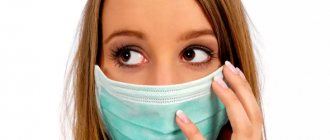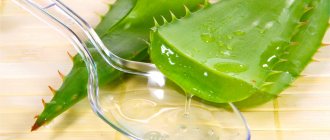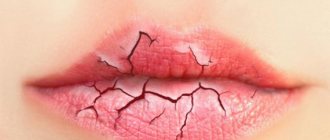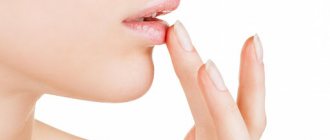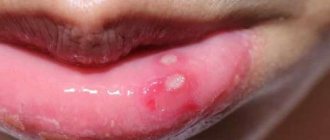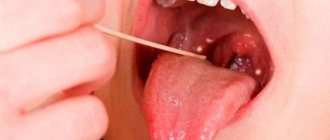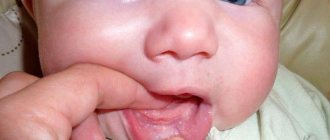Why does inflammation develop specifically on the lips? The fact is that the skin on them is different than on other parts of the body. The red border of the lips, although equipped with a protective stratum corneum, is too thin compared to the skin in other places. And at the same time, unlike the more secluded parts of the body, our tender and defenseless lips are always open to any adversity. They have to suffer from harsh climates, unfavorable ecology, chemicals contained in cosmetics, food, and many other irritants.
Related article: How to cure chapped lips? There are many reasons for cheilitis. Therefore, treatment may vary depending on the situation. But the first specialist you need to contact with such an ailment is a dentist. If it turns out that the disease is secondary, he will refer the patient to a specialized doctor.
To make it easier to navigate the variety of cheilitis, we will tell you about the main types of the disease.
Hypovitaminosis
Reason . Lack of B vitamins (especially B2 and B6).
Symptoms . On the lips and mucous membrane of the mouth - peeling, itching and redness. There may be bleeding cracks in the corners of the mouth. Often accompanied by glossitis - inflammation of the tongue.
Treatment and prevention . You should start by taking complex vitamins (especially A, E and group B) and following a diet that excludes spicy, salty, sour and too hot foods. You should lean on non-acidic fruits and vegetables, as well as foods containing iron and riboflavin: beef, liver, dairy products. It is necessary to regularly use hygienic lipstick and get rid of the habit of licking your lips, especially on the street.
Non-pathological causes
Various factors can provoke white plaque on the lips:
- insufficient oral care;
- an unbalanced diet when it does not provide the body with sufficient vitamins and minerals;
- wearing dentures;
- taking certain medications;
- depression;
- bad habits, in particular smoking.
To get rid of unwanted manifestations in such cases, it is enough to eliminate the provoking factor.
If the problem occurs only in the morning, most likely the white coating is dried saliva that flows out randomly during sleep. When such manifestations are observed occasionally, and the plaque itself does not have an unpleasant odor, there is no need to worry. The film will disappear after hygiene procedures.
Meteorological
Reason . Exposure to cold air, strong wind. It occurs more often in men, especially those who suffer from general weather sensitivity or work outdoors.
Symptoms . Peeling, itching and dryness, as well as erosions and crusts on the lips. Cracks in the corners of the mouth.
Treatment and prevention. If possible, minimize exposure to cold and wind. Use protective cosmetics for lips. Take B vitamins internally, as well as PP. Use special wound-healing ointments externally and often rinse your mouth with extracts of chamomile, oak bark, and calendula.
Reasons why lip diseases develop
Human lips are very vulnerable, which often leads to redness, irritation, dryness, and even the formation of wounds and crusts. Most often, cheilitis develops under the influence of external factors.
: low temperature, wind, sun rays. Under their influence, the skin around the mouth dries out, which in itself is unpleasant. If you don't do anything about it, the problem will only get worse.
The second factor that causes lip diseases is various allergens. The culprit of the pathological reaction can be both food and cosmetics. Problems in the functioning of the internal systems of the body can also affect the face.
Most often, the delicate skin around the mouth suffers due to hormonal imbalances, fungal and viral infections. Vitamin deficiency, indigestion and general deterioration of immunity can aggravate the situation.
There are also less common causes of lip disease. They usually lead to certain types of cheilitis.
Actinic
Reason . Increased sensitivity of the red border of the lips to ultraviolet radiation. The disease appears in the spring-summer season, and by autumn it disappears by itself.
Article on the topic
Lipstick: history of creation and subtleties of use
Symptoms .
The red border of the lower lip swells, becomes bright red, powdered with small white scales. Sometimes small bubbles appear, after opening which crusts form. Patients are concerned about itching, burning, and less often sore lips. Treatment and prevention . You should not only reduce your exposure to sunlight, but also start constantly using sunscreen cosmetics. Ointments with hormones (hydrocortisone, prednisolone, etc.) can be used topically. Inside - vitamins. Rinse your mouth with herbs.
How to get rid of unpleasant symptoms at home
It is not worth treating at home without seeing a doctor. However, there are ways that you can resort to to reduce discomfort:
- If your lips become inflamed due to the sun or cold, it is advisable that they are always covered with a protective layer of balm.
- For severe itching and burning, which occur in almost all forms of cheilitis, cold compresses will help. Before applying them, the skin is covered with a layer of balm so that the lips are treated simultaneously with the reduction of pain.
- If your lips are red and covered with cracks, sores or any other open wounds, you need to make sure that bacteria do not get into them. The surrounding skin and teeth should be treated with a cotton pad soaked in hydrogen peroxide or Miramistin. Special antiseptic ointments will have the best effect.
- If pain and itching are unbearable, painkillers can be used. Ointments with a cooling effect will have the same effect.
All methods of folk treatment for cheilitis will be useless if you resort to them thoughtlessly - without consulting a doctor. In most cases, inflammation, redness and itching of the lips are harmless. Such symptoms can go away even without therapy, but sometimes they indicate dangerous diseases, so medical help should not be neglected.
Allergic
Reason . Increased sensitivity of the red border of the lips to chemicals, for example, dyes contained in toothpaste, lipstick, dentures. Women get sick more often.
Symptoms . It begins with violent swelling and redness of the red border of the lips, which then becomes covered with abundant scales and crusts, and painful cracks form in places.
Treatment and prevention . Drugs that reduce the body's sensitivity to allergens, antihistamines, and vitamins are used. Externally apply lotions from a 2% solution of boric acid, zinc ointment, anti-inflammatory creams containing glucocorticoids, salicylic acid, sulfur. Avoid substances that irritate the oral mucosa and red border of the lips. After eating, rinse your mouth with infusion of chamomile or soda.
What does white plaque indicate - diagnostics
What does the formation of a whitish film mean? You can conduct preliminary diagnostics and identify the suspected cause of the problem by its location and main characteristics:
- cheilitis, herpes - clots form on the outside of the lips,
- candidiasis - accumulation on the inside of the lips in the form of a cheesy layer,
- problems of the gastrointestinal tract - clots look like a sticky film,
- vitamin deficiency, alcohol and nicotine addiction - a whitish coating collects in the corners of the mouth.
Accumulations under the lip also occur with fungal infections of the mucous membrane. If they cover the palate, tonsils, the inside of the cheeks and the tongue, then this is a severe form of infection. In men, this type of formation is most often the result of smoking.
Exfoliative
Reason . Depression, anxiety, vegetoneurosis.
Symptoms . It affects only the middle part of the red border of the lips, while at the edges everything remains normal. Accompanied by either itching and peeling, or the development of swelling and abundant crusts. It occurs mainly in women and young girls, especially those suffering from vegetative neurosis. They often have the habit of licking or biting their lower lip.
Treatment and prevention . Complex therapy uses anti-inflammatory and antibacterial ointments, vitamins, and immunomodulators. An important part of treatment is sedatives or tranquilizers. Sometimes psychotherapy is necessary.
What symptoms should cause alarm?
A small amount of whitish clots is often a consequence of the vital activity of organisms living in the mouth. If the formation of a film is not accompanied by discomfort or pain, and the film itself is easily cleaned off, then you don’t need to panic. But plaque should cause alarm if the following accompanying symptoms occur:
- unpleasant, putrid odor from the mouth,
- decreased functionality and mobility of the tongue,
- change in consistency and shade of plaque,
- restless sleep,
- loss of appetite,
- painful sensations in the throat, abdominal part.
An unpleasant accompanying symptom of the problem may be bad breath.
The listed signs can signal serious pathologies and require an immediate visit to the doctor. Based on the test results, he will identify the causes and determine treatment tactics.
Fungal
Reason . Fungal infection Candida albicans. Damage to the red border of the lips is often combined with stomatitis. The disease is promoted by poor oral hygiene, hypovitaminosis B2, long-term use of antibiotics or glucocorticoids, poor nutrition (little protein foods, too many carbohydrates), as well as carbohydrate metabolism disorders.
Symptoms . The lips are swollen, reddened, the edges of the lips are dry and flaky. In the corners of the mouth there are weeping areas with erosions covered with a whitish, easily removable coating.
Treatment and prevention . First, you need to test for a fungal infection. If its presence is confirmed, the doctor will prescribe antifungal drugs, which should be used orally in combination with vitamin B2 and ascorbic acid. Complete sanitation of the oral cavity and careful treatment of problem areas with oil solutions of vitamins are necessary. To prevent relapses, a diet with limited carbohydrates is prescribed.
How is treatment carried out when plaque appears in the oral cavity?
To prescribe effective treatment, the doctor must first determine why plaque appears on the lips. The faster and more accurately he makes a diagnosis, the easier the therapy will be. Treatment will differ in each individual case. A universal technique is to rinse the mouth with soda and potassium permanganate.
Treatment of candidiasis can be local and systemic. Suitable therapy is selected taking into account the stage of development and form of the disease. Local treatment of the affected areas is carried out using antifungal and antiseptic drugs - sprays, rinses, gels, etc.
Systemic treatment of candidiasis is carried out in the chronic form of the disease and its spread to other organs. It involves taking special polyene antibacterial drugs, which are active against most fungi and some protozoa, or antimycotic substances. The following remedies are often prescribed:
- "Nystatin" is a polyene antibiotic characterized by moderate toxicity;
- Fluconazole is a highly effective antimycotic drug;
- "Nizoral" is an antifungal agent that copes with candidiasis in a few days.
An addition to the main therapy can be rinsing the mouth with decoctions of sage, chamomile, and yarrow. To eliminate an undesirable symptom, it is important to adjust your diet, drink enough fluids, and humidify the air in the room. It is also necessary to sanitize the oral cavity and constantly maintain its hygiene at a high level.
On average, treatment takes three weeks. It is carried out until the symptoms disappear completely and then extended for another week.
If hair grows in your mouth
Of course, this does not happen, but sometimes it seems that the tongue is covered with... hair. The fact is that thread-like papillae grow on the tongue, and their length can reach one and a half centimeters, and they become like hairs. This phenomenon is observed in cases of impaired immunity, in response to certain medications that disrupt the microflora of the oral cavity, as well as in patients with chronic gastritis and colitis. There is nothing wrong with this, but the patient experiences unpleasant sensations that create constant discomfort.
What to do . If possible, you should stop taking medications and take only antihistamines. After 5–10 days, the “hair” on the tongue will disappear. And don’t forget to brush not only your teeth, but also your tongue twice a day.
Be careful, border!
Oncological diseases of the lips and oral cavity usually creep up unnoticed; all of them can now be successfully treated if you consult a doctor in time. What symptoms should you pay attention to?
Sometimes a malignant formation can cause a harmless-looking spot on the lip. Although it often does not bother you for several months, then an erosion or ulcer suddenly forms, which seems to sink inside the lip and harden.
In men after forty years of age, a wart often appears on the lip, which quickly becomes covered with papillae, becomes horny and lasts for 4–6 months. It is best to remove it as soon as possible.
In general, if you feel any discomfort in your mouth or notice something “suspicious,” do not put off visiting the dentist. Be attentive to yourself!
Allergic to saxophone?
Did you buy a new lipstick or change your toothpaste? And suddenly my lips were “swept.” What's happened? This is how contact-allergic cheilitis manifests itself. The name itself speaks about the reasons that cause it.
But the culprits of the disease are not only chemicals - sometimes it develops after contact with metal objects. There is even a “professional version” - this type of cheilitis attacks musicians who play wind instruments - the lips react to contact with a metal mouthpiece. Peeling, itching, burning, redness of the lips, and sometimes swelling are unpleasant sensations. The main thing is not to try to get rid of them on your own; you can greatly worsen your condition.
What to do . To find and eliminate the culprit, this most often requires a consultation with an allergist and appropriate examinations to determine the allergen. For treatment, ointments containing corticosteroids, which have antiallergic, antipruritic and anti-inflammatory effects, are used, and antihistamines are also prescribed.
You will also have to watch your diet: give up citrus fruits, strawberries, chocolate, caviar and other foods that can provoke allergic reactions.
Herpes on the nose: symptoms and signs
It must be said that the rashes are not typical. Herpes in the nose manifests itself differently than, say, on the lips. During an exacerbation, a conglomerate rash usually appears in this zone, which has a thicker “crusty” outer layer. It is formed by epithelial cells. Outwardly, such a rash resembles abscesses rather than blisters that appear with a herpes rash on the lips.
On the wings of the nose, white (sometimes light pink or yellowish) bubbles up to 5 mm in diameter can form.
Note that if herpes first appeared in the nasal area (in the nasal cavity or on the tip of the nose), then in case of relapses, the infection will most likely appear there.
Typically, symptoms of the disease appear inside the nose. There appears redness, itching, slight hyperemia, against which small blisters appear. There can be more than a dozen of them in one conglomerate. They are located close to each other. At first they are filled with a clear liquid, which after a while becomes dark. If the formations are not touched (do not scratch, do not open), then after a while they will dry out on their own and disappear under a gray-yellowish crust. This “sore” will disappear on its own in a few days. A stain will remain in its place, which will acquire a natural shade over time. This process can take from one to several weeks, since the disappearance of rashes in one place does not guarantee that they will not appear in another.
If you accidentally damage the bubbles, the process may take longer. In addition, an inflammatory process may begin on the damaged surface, which in turn is fraught with erosion of the mucous membrane and ulceration. These processes may be accompanied by severe itching, burning and pain. In this case, there is a danger of a secondary, often bacterial, infection. Accordingly, this aggravates the patient’s situation and requires additional treatment.
Continuous geography
Often, during an examination, the doctor asks: “Show your tongue!”: by its appearance, one can suspect symptoms of a variety of diseases. But the tongue also has its own specific diseases. One of them is desquamative glossitis, in which the surface layer of the mucous membrane begins to peel off, or, as experts say, slough off. As a result, in some areas of the tongue there are no filiform papillae left at all, and they acquire a bright red color, while a light coating appears on the neighboring ones.
Wind and sun are not friends
There is also the so-called meteorological cheilitis, which often develops in those who spend a lot of time in the wind and are often exposed to sudden temperature changes in the air.
And in the southern regions, where the sun shines brightly almost all year round and therefore increases solar radiation, actinic cheilitis is common.
What to do. Lips should be well protected and constantly use hygienic and sun-protective lipstick. And for those who work in the wind, on the street, a special ointment based on lamb fat is suitable, which is no less effective than lipstick.
These two types of cheilitis must be treated promptly and carefully so that they do not gradually become chronic, because against their background, oncological diseases of the lips and oral cavity often rapidly develop.
